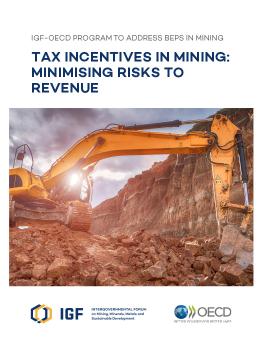
Tax Incentives in Mining
Minimising risks to revenue
This practice note looks at tax incentives in the mining sector to help governments design fiscal regimes for the mining industry that raise sufficient revenue, while providing adequate inducement to invest.
In a world of mobile capital and profits, many developing countries use tax incentives in the hope of attracting domestic and foreign investment. Their effectiveness, however, has often been disputed, not least in relation to the mining sector, which involves location-specific resources that cannot be moved.
This practice note looks at tax incentives in the mining sector. For many developing countries, receipts from mining are often a major source of revenue. The central task for policy-makers, therefore, is to design fiscal regimes for the mining industry that raise sufficient revenue, while providing adequate inducement to invest. Many times, governments have given tax incentives to mining investors that have turned out to be overly generous, forgoing significant tax revenues and sometimes resulting in conflict with investors. Preventing similar occurrences from happening again demands sector-specific guidance on the design and use of tax incentives.
This practice note focuses on the types of behavioural responses of taxpayers and unintended consequences that might flow from providing tax incentives. For example, if a mine is given a time-limited tax holiday, one response might be to speed up the rate of production to increase its tax-free revenue during the period. When the holiday expires, there is less ore left to extract than if the mine had maintained a normal rate of production, further reducing government revenue. The goal of this practice note is that governments of resource-rich countries are better equipped to identify and cost potential behavioural responses by mining investors to tax incentives.
Participating experts
You might also be interested in
Artisanal and Small-Scale Mining of Critical Minerals
This report examines the potential for artisanal and small-scale mining (ASM) to take an expanded role in the global supply of critical minerals.
Navigating Global Sustainability Standards in the Mining Sector
This brief examines the latest developments and trends in responsible mining standards and voluntary sustainability initiatives.
Leveraging Digital Infrastructure for Mining Community Resilience
This report explores the socio-economic impacts and potential of new technologies in the mining sector.
IGF Case Study: Decarbonization of the Mining Sector
Case studies from Chile, Indonesia, and South Africa that delve into the role of the mining sector in efforts to reduce greenhouse gas (GHG) emissions.